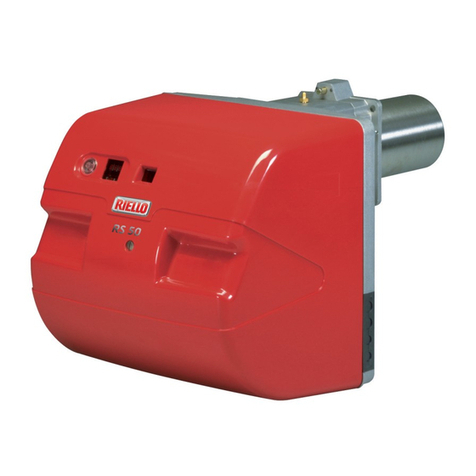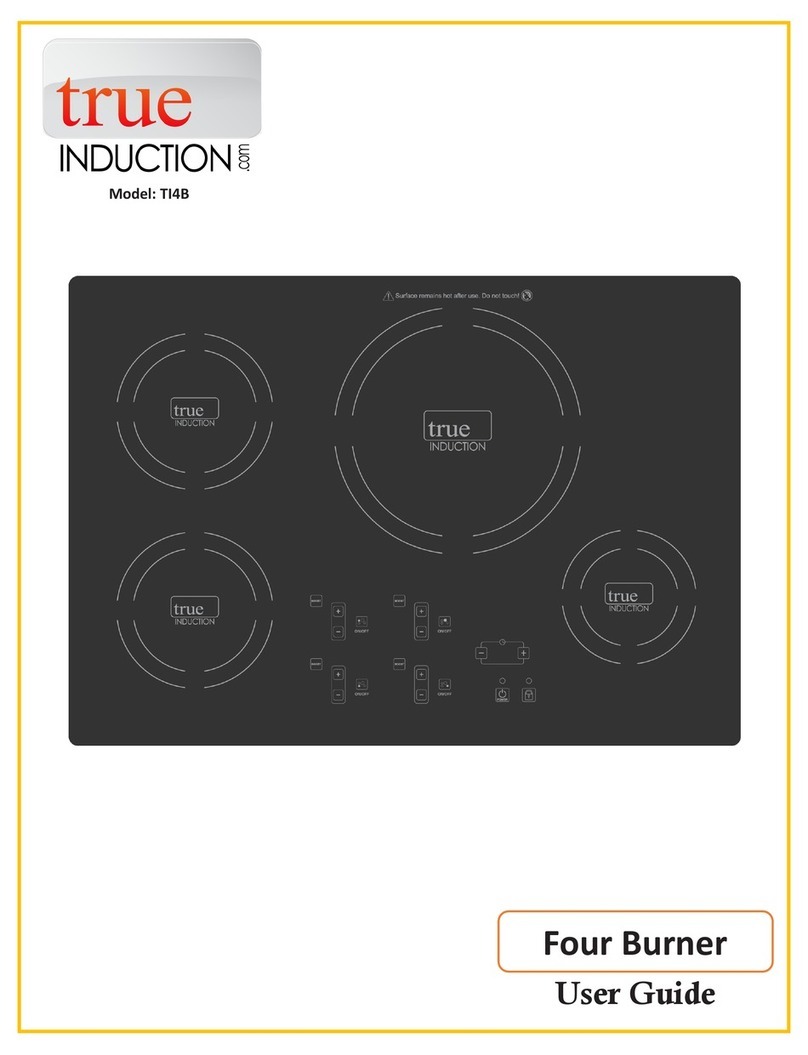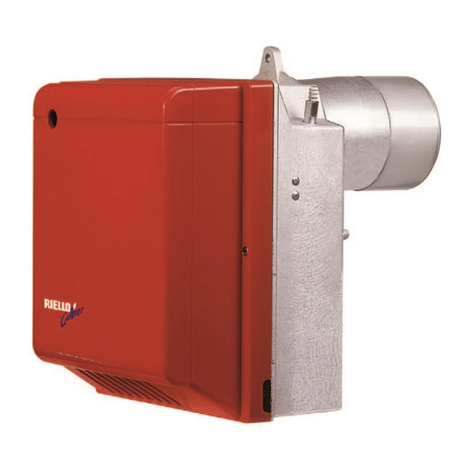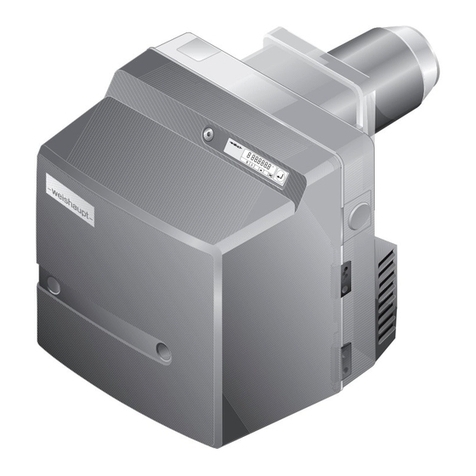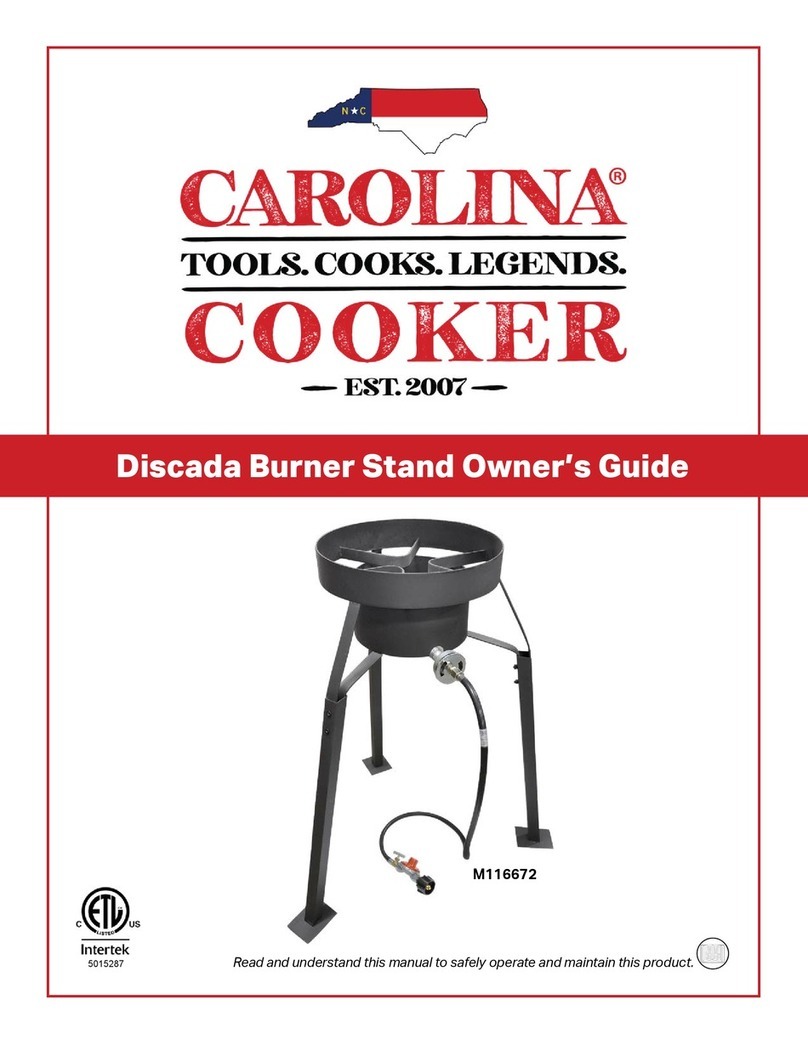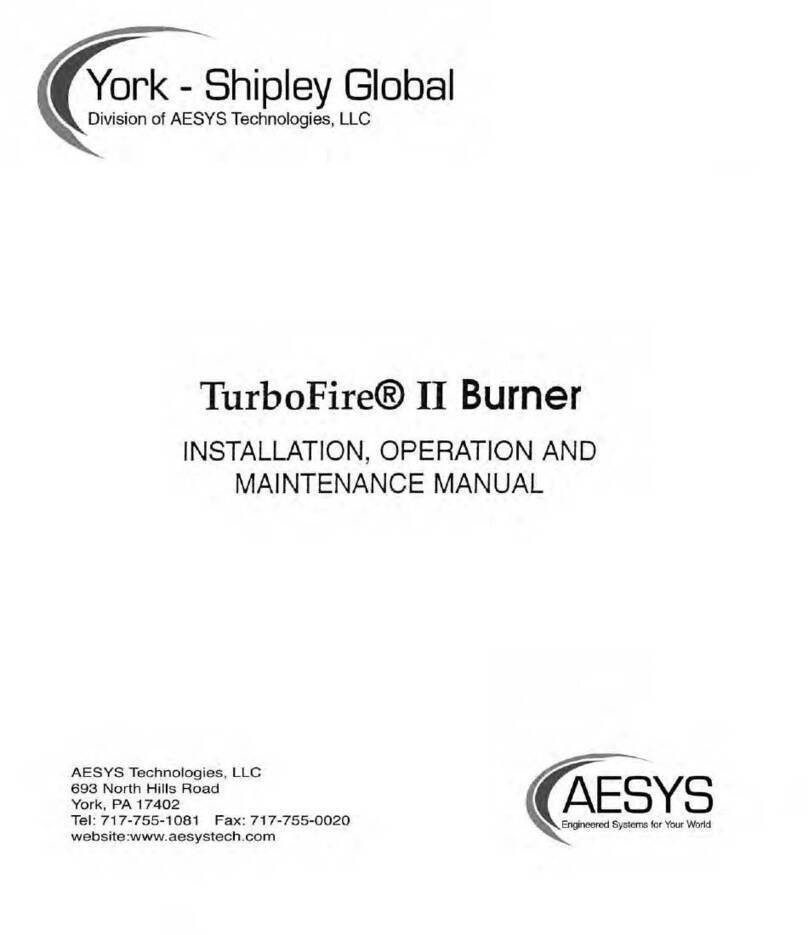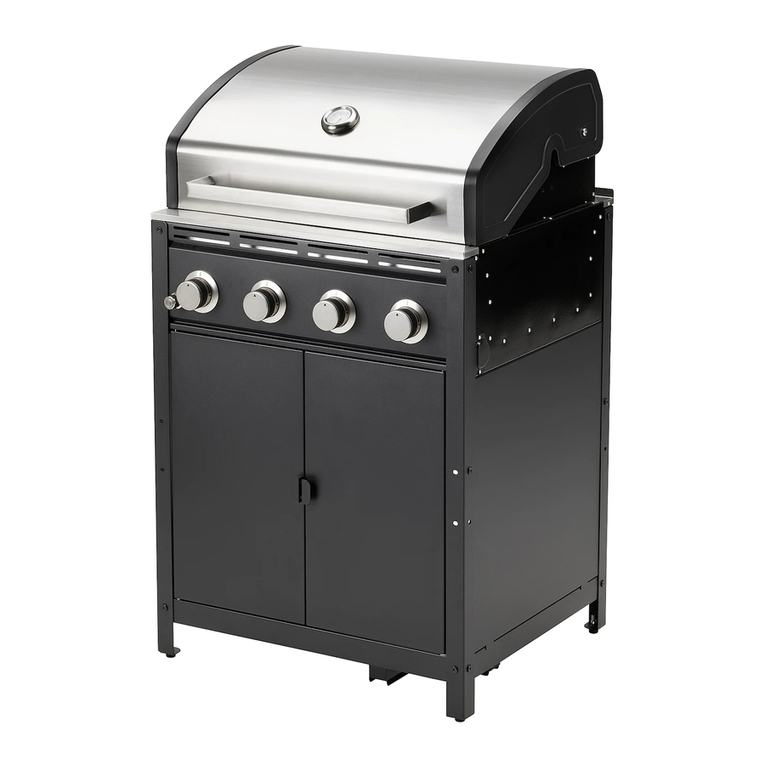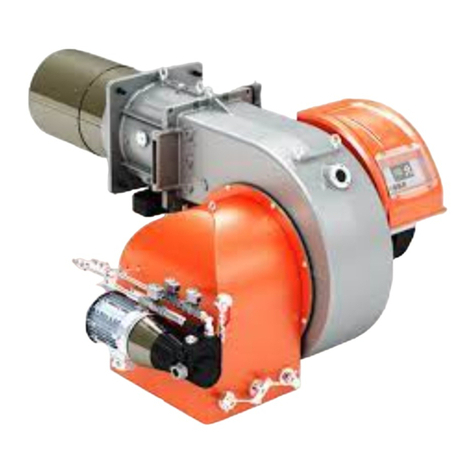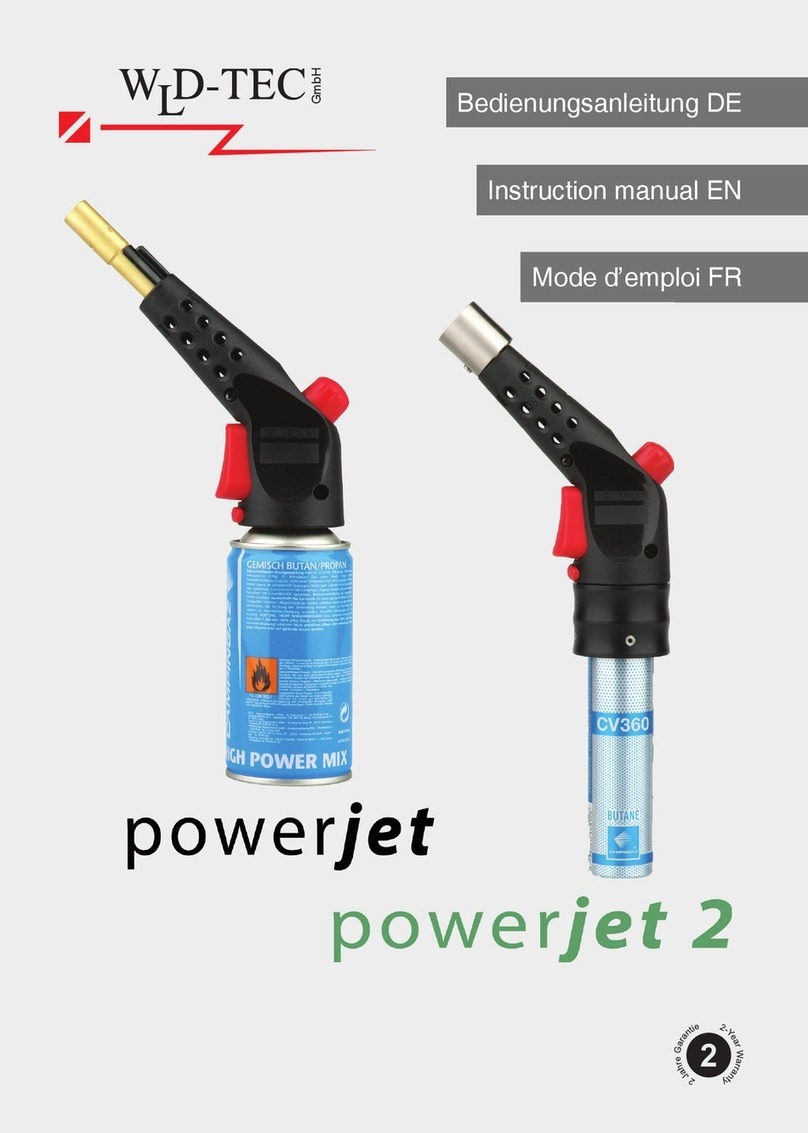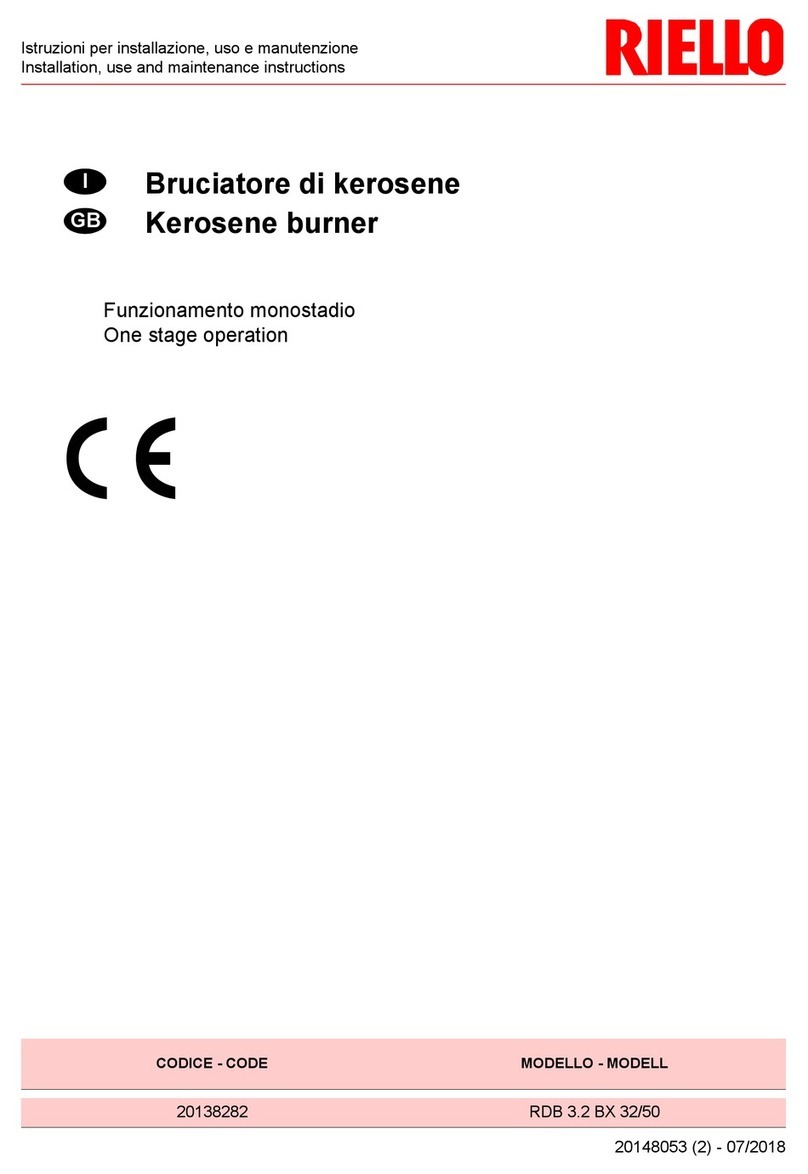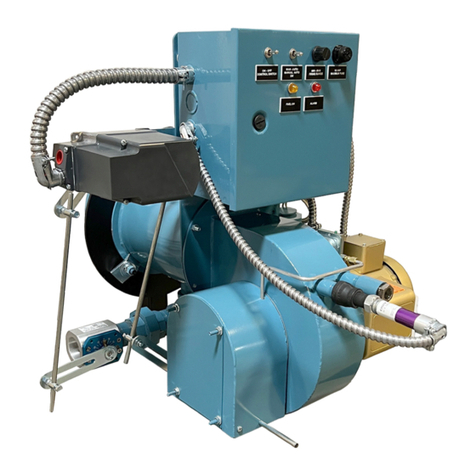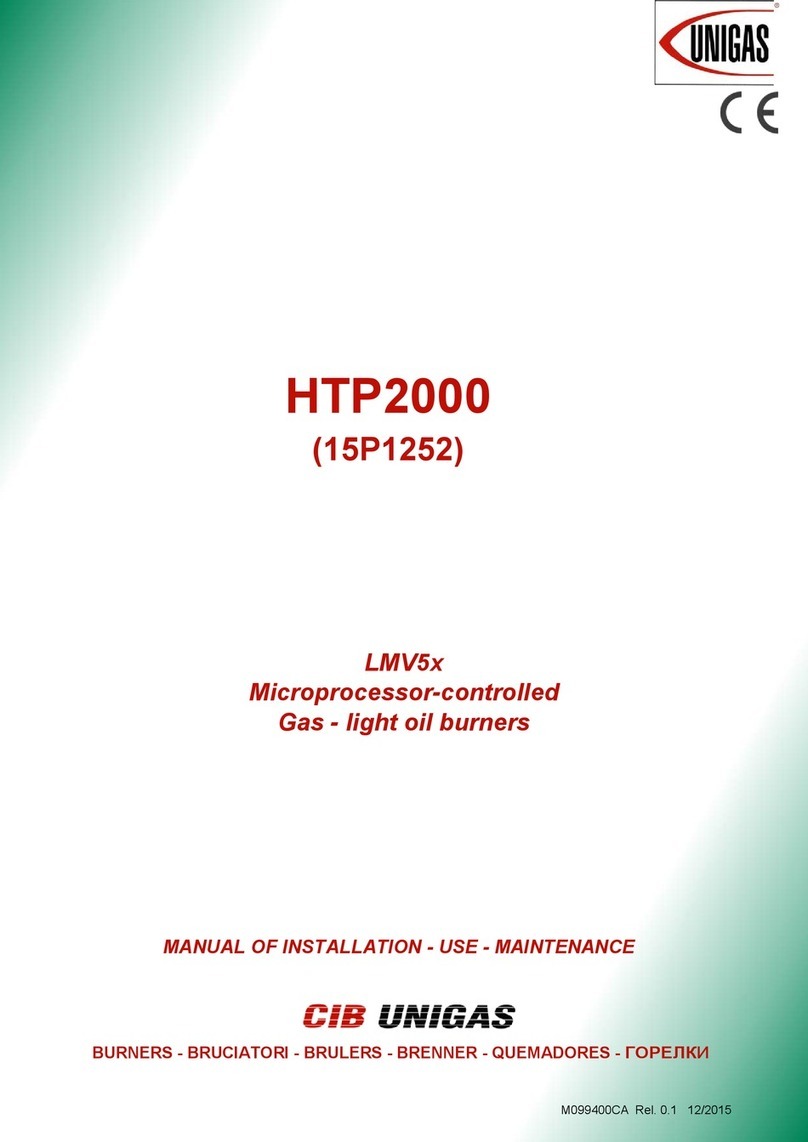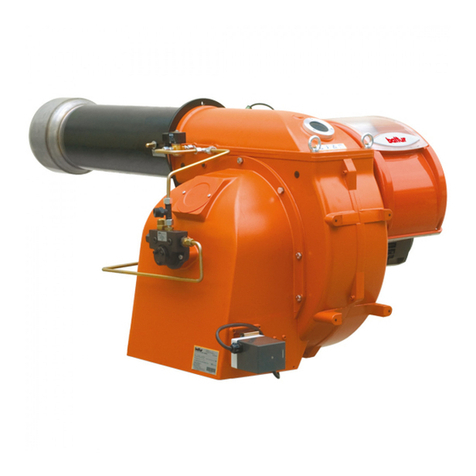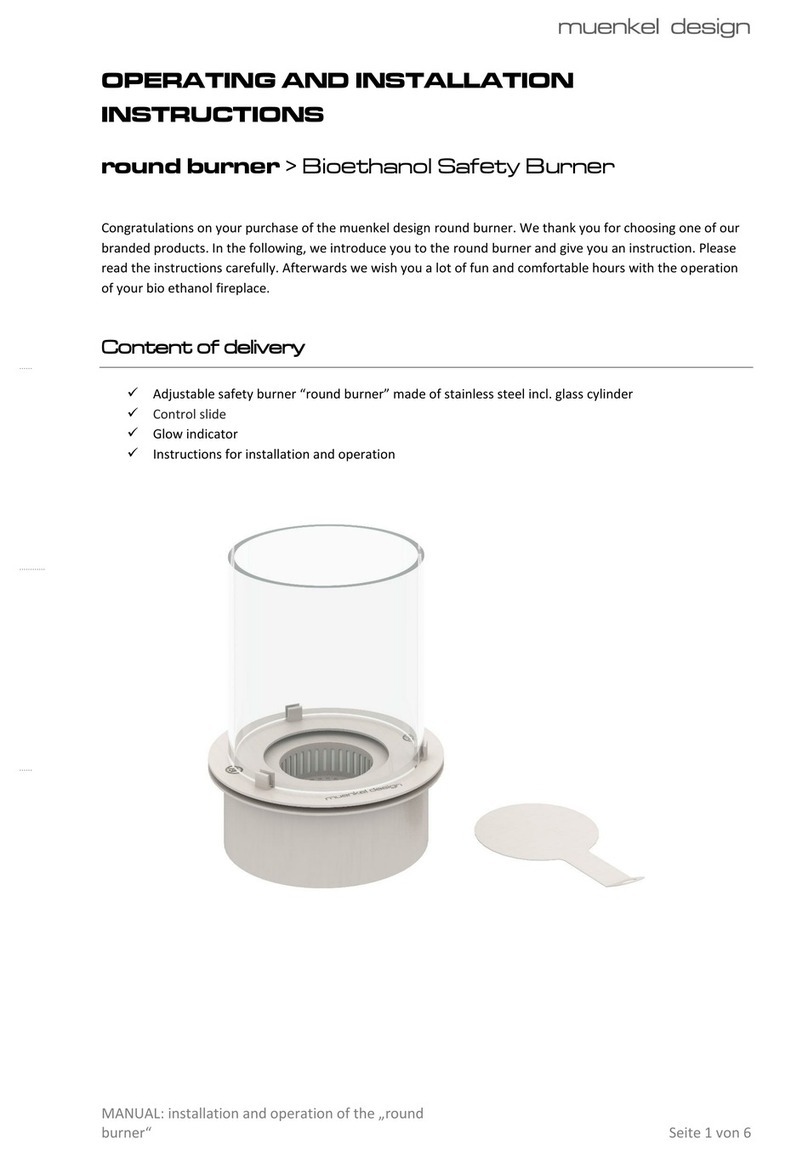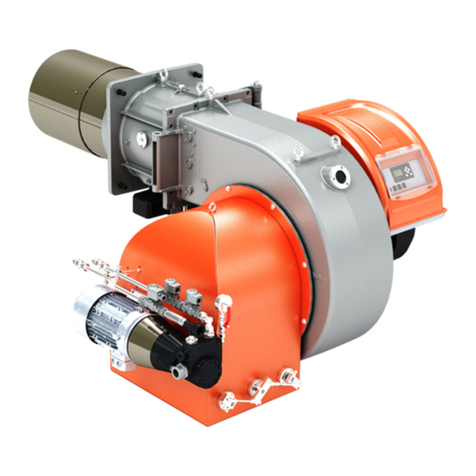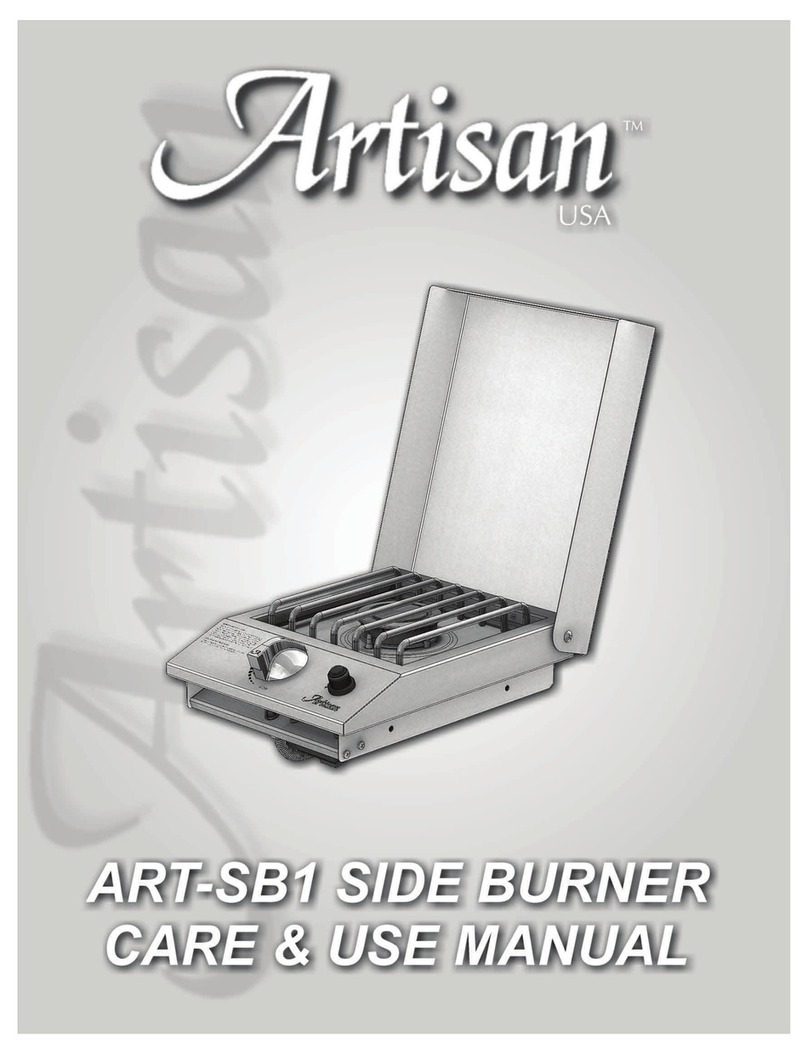
(1) STANDARD UL EQUIPMENT
AND IMPORTANT OPTIONS
Gas
No. 2 Oil
STANDARD UL EQUIPMENT
AND IMPORTANT OPTIONS
Gas
No. 2 Oil
Pressure
Atomized
Air
Atomized
Pressure
Atomized
Air
Atomized
General
Motor, Fan and Air Inlet Control X X X
Gas Fuel
Main Manual Shutoff Valve X
Air Flow Switch X X X Main Safety Shutoff Valve X
(2) Burner Mounted Control Panel,
Switch and Indicator Lights X X X Second Safety Shutoff Valve X
Main Gas Regulator X
Flame Safety Control X X X Gas Checking Valve X
Ultra Violet Scanner X X X High and Low Gas Pressure Switches X
Motor Controller (single phase voltage) X X X Metering Valve (modulating systems) X
Motor Starter w/Overloads (3 PH volt) X X X Normally Open Vent Valve Opt.
Fuel Selector Switch Duel Fuel Burners Only
Ignition
Proven Gas Pilot Ignition X X
Oil Fuel
Oil Drawer Assembly with Diffuser X X
JB2-30 and JB2-50 X X X Oil Nozzles X X
Pilot Solenoid Gas Valve X X Integral Oil Pump (JB2-07 to JB2-20) X
Pilot Gas Regulator & Manual Valve X X Remote Oil Pump (JB2-30 to JB2-50) X Opt.
Pilot Gas Ignition Transformer X X Two Safety Shutoff Valves X X
Direct Spark Oil Ignition (3) Low Air Atomizing Switch X
Direct Spark Oil Ignition
Transformer (3) Low Oil Pressure Switch (STD when
using remote oil pump) X X
Options
Inverted Housing X X X Oil Pressure Gauge X X
Alternate Control Cabinet
Positioning X X X Oil Metering Valve (modulating
system) X X
Remote Control Panel X X X Future Gas Combustion Head Opt. Opt.
Fuel Metering CAM-NETIC II X X X Air Compressor X
1. The configuration of each unit will vary with specific job requirements such as input rating, electrical specification and special agency approval codes.
The above chart shows those items standard to a basic burner plus a few options that may be added.
2. Indicator lights are “Power On”, “Call for Heat”, ”Fuel On” and ”Flame Fail” for hard wired panels. “Alarm”, “Low Water”, “Power”, “Call for Heat”, “Ignition
On”, and “Fuel On” for circuit board panels.
3. Maximum rate for direct spark is 20 GPH at low fire or 35 GPH at high fire. (standard on straight oil burners, pressure atomized)
Model JB2 - Sizing and Application Data (contact Webster for complete information)
Model
Number
Maximum
Furnace
Pressure
Burner Firing
Capability Range
Burner
Motor
HP
Gas Train Oil Pump Motor HP Air
Compressor
Motor HP
Pipe Size (3) Inlet Press (in wc) Pressure
Atomizing
Air
Atomizing
Gas scfh #2 Oil gph LFS, LHL Modulation
JB2-07 2 900 / 2800 10 / 20 3/4 1 1/2” 10 / 14” 13” Integral N/A N/A
JB2-10 2 900 / 3500 10 / 25 1 2” 8 / 14” 9 / 14” Integral Optional 2
JB2-15 2 900 / 3500 10 / 25 1 1/2 2” 8 / 14” 9 / 14” Integral Optional 2
JB2-20 2 1200 / 4200 12 / 30 2 2” (4) 12 / 14” (3) 13 / 14” Integral Optional 2
JB2-30 2.5 1200 / 5300 12 / 37.8 3 2 1/2” N/A 13 / 14” 3/4 Optional 2
JB2-50 2.5 1200 / 6000 12 / 42.8 5 2 1/2” N/A 2-5 psi 3/4 Optional 2
3. Lower pressures may apply to reduced inputs. 4. 11-14” with IRI and LFS or LHL. 12-14” with IRI and modulation.
The above maximum ratings are based on 0 furnace pressure, an altitude of 1000 feet, 90oF air temperature and 60 HZ electrical supply. Use the follow-
ing corrections for higher temperatures and altitude. Capacity decreases by 17% for 50 Hertz.
Capacity decreases by 4% for each 1000 feet above 1000 foot altitude.
Capacity decreases by 6% for each 1 inch of furnace pressure.
Capacity decreases by 2% for each 10oF increase in air temperature over 90oF.
Gas input ratings based on 1000 BTU/cu ft. and 0.64 specific gravity. Sizes and pressure will vary with different gas properties.
Oil input ratings are based on 140,000 BTU/gal. for ASTM #2 fuel oil.
The vessel draft must be between -0.1 and +0.1 wc.
Essential Ordering Information and Data:
Power Supply - Confirm 120-60-1 for control circuit and electrical supply for burner motor(s) (voltage, frequency and phase).
Describe Boiler or Heater to be Fired - Including the manufacturer, model number, furnace pressure and furnace size.
Firing Rate - Define firing rates in MBH for gas and GPH for oil.
Fuel to be Burned - Type of gas and/or oil, including the BTU value.
Approval Agency - UL, FM, IRI (GE GAP), CSD-1, NFPA, Mil spec and local codes, if applicable.
Flame Safety Control Preferred - Honeywell or Fireye controls. Gas Train Components Preferred - ASCO/ITT, Honeywell or Landis
Control System - ON-OFF, Low Fire Start, Low High Low, Modulation, Posi-Control. Required Options - Mounting plate, limit controls, etc.
Model JB2 - Specification Data (6000 MBH Maximum Input)
Page 8 SpecificationJB Manual

